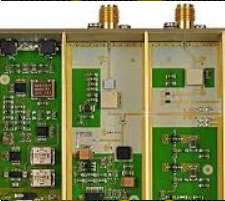CCTV Walkie Talkie GPS Recorder Remote Control Monitor PCB Manufacturer
-
Amateur radio requires a power rating of 0.5W or less.
Many licensed handheld radios are 5W, which is actually quite high. Theoretically, a 1W transmission power can cover a range of 20 kilometers.
GPS, remote controls, monitors, recorders, and CCTV are different technologies or devices related to positioning, monitoring, and recording, each with unique functions and application scenarios.
The GPS image transmission remote control also integrates a radio function and includes a wristband that can be used as a "watch."
GPS + Beidou positioning, built-in eavesdropping, remote oil and power shutoff, and anti-theft, fraud, and adultery prevention.
The chip used is a MediaTek chip that supports GPS, GLONASS, and Beidou. It also supports GPRS (2G network), eliminating the need for a communication chip. A GPRS amplifier chip is also included. The battery is very thin, flexible; the thinnest I've found is less than 0.2mm, about the thickness of a business card. Battery capacity is generally related to volume; however, the battery's shape affects internal resistance. High internal resistance not only wastes power but also increases heat generation and can cause explosions.
A 500mAh battery is roughly the same size as four button cells, allowing for stacking or laying them flat. If you have the ability to use a ceramic antenna, cost and size are no longer an issue. SIM cards are surface-mounted and permanently attached to the circuit board, eliminating the need for a SIM card holder. The capacitors, resistors, inductors, flash memory, and crystal oscillator components of other peripheral circuits combined are no larger than a button cell. Of course, laying them flat occupies a larger area than a button cell, but is only half the thickness. Alternatively, consider attaching them to a flexible PCB, which is suitable for wearable applications.
For example, 2G is cheaper than 4G, dual-mode positioning (Beidou + GPS) is cheaper than single-mode, and base station positioning is cheaper than satellite positioning.
Remote controls are ubiquitous, making operating devices easy and convenient, from TVs and air conditioners to garage door controls. Common remote controls on the market today fall into two main categories: wireless and infrared. Infrared remote controls are one of the most common remote control methods. They utilize infrared waves to transmit signals. Wireless remote controls use radio waves or other radio frequency (RF) signals for communication, eliminating the need for direct aiming at the receiving device and providing enhanced signal penetration. Wireless remote controls offer a wide operating range and can even penetrate obstacles such as walls, making them suitable for control over long distances or in complex environments.

